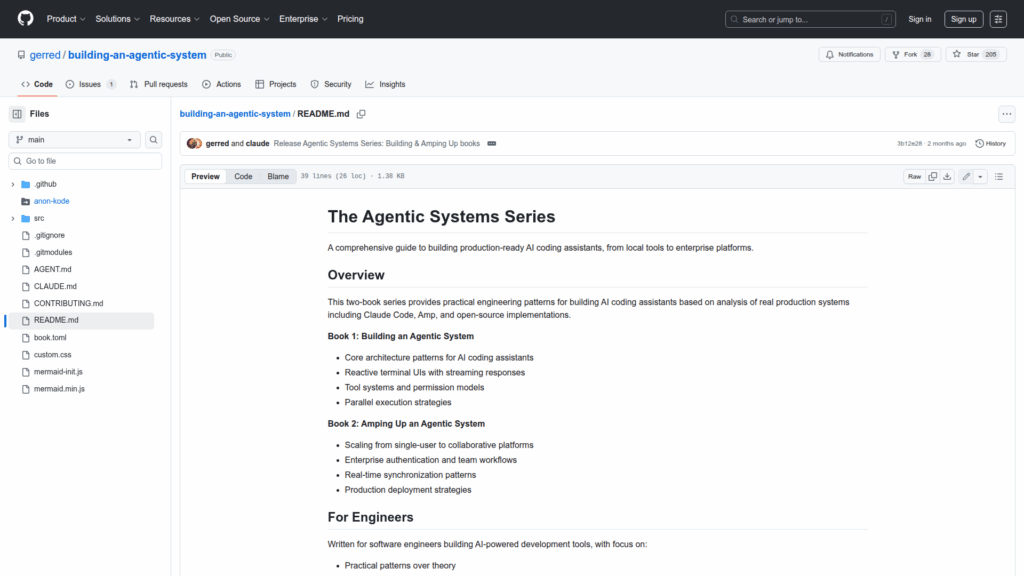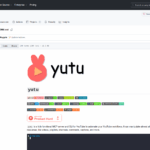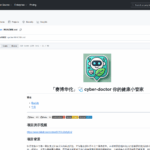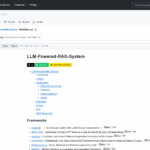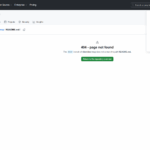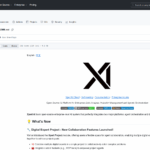building-an-agentic-system
Basic Information
This repository is the companion to a two-book series that teaches engineers how to design and build production-ready AI coding assistants and agentic systems. It focuses on practical engineering patterns and real-world architectural decisions derived from analysis of existing systems such as Claude Code and Amp as well as open-source implementations. The first book covers core architecture for coding assistants including reactive terminal user interfaces, streaming responses, tool systems, permission models, and parallel execution strategies. The second book addresses scaling from single-user tools to collaborative, enterprise-ready platforms with authentication, team workflows, real-time synchronization, and production deployment strategies. The material is targeted at software engineers building AI-powered development tools and platforms.

